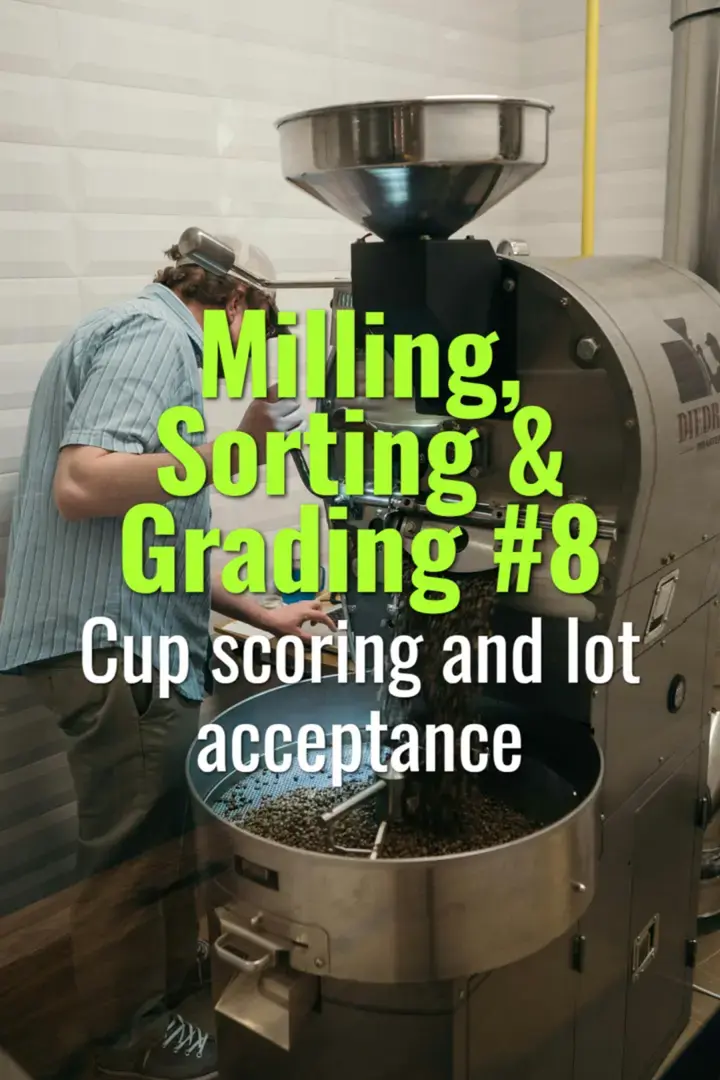Cup scoring and lot acceptance
This topic explains how cup scoring is used to evaluate coffee quality, the standards applied by the Specialty Coffee Association (SCA), and how scores determine whether lots are accepted or rejected in trade.
- Coffee Basics Nerds
- 2 min read
Article 8 of 12 in Milling, Sorting & Grading/

What is Cup Scoring?
- A structured sensory evaluation performed by trained cuppers or Q Graders.
- Uses the SCA cupping form to score attributes on a 0–10 scale.
- Attributes: fragrance/aroma, flavor, aftertaste, acidity, body, balance, uniformity, clean cup, sweetness, and overall impression.
SCA Scoring System
- 90+ points: Exceptional, competition-level, rare.
- 85–89.99 points: Excellent, high-end specialty.
- 80–84.99 points: Very good, standard specialty.
- Below 80 points: Not specialty grade (commercial or premium commercial).
Lot Acceptance Based on Scores
- Specialty buyers: Require ≥80 points.
- Direct trade contracts: Often specify minimum score (e.g., 84+).
- Commercial buyers: May accept <80 point lots if consistent.
- Rejection: Lots that fall short may be downgraded, blended, or sold into commodity markets.
Cup Scoring & Consistency
- Multiple cuppers evaluate the same lot to minimize bias.
- Scores averaged; large discrepancies trigger recalibration.
- Consistency across cups in the same lot critical for acceptance.
Impact on Farmers & Buyers
- Higher scores → higher premiums and market access.
- Lower scores → limited buyers, reduced prices.
- Cupping feedback helps farmers adjust processing or harvest practices.
Best Practices
- Always pair cupping results with physical analysis (defect counts, moisture, screen size).
- Keep transparent records for traceability.
- Share results with farmers to encourage quality improvements.
Lasting Importance
Cup scoring and lot acceptance provide the final verdict on coffee quality before trade. By using standardized scoring protocols, producers and buyers align expectations, ensuring that specialty coffee markets reward excellence while maintaining transparency and consistency.
You might also like:
- Tags:
- Lasting Importance
- Best Practices
- Specialty Coffee
- Coffee Quality
- Direct Trade
- Specialty Buyers
- Acidity Body
- Specialty Grade
- Sensory Evaluation
- Screen Size
- Aroma Flavor
- Producers Buyers
- Defect Counts
- Cupping Feedback
- Sca Cupping
- Clean Cup
- Market Access
- Body Balance
- Cupping Results
- High End
- Higher Premiums
- Helps Farmers
- Flavor Aftertaste
- Fragrance Aroma
- Coffee Markets